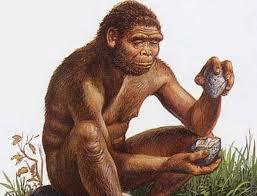28220616
Unit 1: The Early Middle Ages. Germanic kingdoms and Byzantine Empire
Description
No tags specified
Flashcards by Juan Fernandez Castillo, updated more than 1 year ago
More
Less

|
Created by Juan Fernandez Castillo
over 3 years ago
|
|
Resource summary
| Question | Answer |
| Who made the last division of the Roman Empire? In what year? | Emperor Theodosius the Great, in 395 AD |
| What is the most accepted chronology of the Middle Ages? | 476 - 1453 or 476 - 1492 |
| In this map of the Byzantine Empire, what do the areas in orange represent? | Justinian conquests during his reign |
| Who is this lady? | Theodora, empress of the Byzantine Empire and Justinian's wife |
|
What does this image represent?
Image:
Schism (binary/octet-stream)
|
The East-West Schism in 1054 |
| This man is tearing an image of Christ from the wall of a church. What does this image represent? | The iconoclastic controversy between the 8th and 9th centuries |
|
What is the name of this type of religious images in the Byzantine Empire?
Image:
Icon (binary/octet-stream)
|
Icon |
|
This is one of the most remarkable examples of Byzantine architecture. What is this basilica called?
Image:
Hagi (binary/octet-stream)
|
Hagia Sophia (Holy Wisdom) |
| What is the name of the Germanic people who settled in Italy at the end of the 5th century? | Ostrogoth |
| What peoples do these arrows represent? | Angles, Saxons and Juts |
|
What Germanic tribe settled in the 6th century in northern Italy?
Image:
Lomba (binary/octet-stream)
|
The Lombards |
|
Explain, looking at this map, why trading was no longer a safe activity in the 6th century
Image:
Eu+S+6 (binary/octet-stream)
|
Because the ancient Roman Empire had fragmented into many kingdoms, some of them enemies, and the Mediterranean was full of pirates. |
|
The Visigoths came to the Iberian Peninsula in 415 as allies of the Roman Empire, what was their objective?
Image:
Visgo (binary/octet-stream)
|
To expel the invading Suevi, Vandals and Alanos from the Iberian Peninsula |
|
What was the religious conflict between the Visigoths and the native Hispano-Roman population of the Iberian Peninsula and how was it resolved?
Image:
Arrian (binary/octet-stream)
|
The Visigoths were Arians and the Spanish-Roman Catholics. The problem was solved when King Reccared converted to Catholicism in 589. |
| What was the Visigoth monarchy like, hereditary or elective? | Elective, That's why there were so many wars between the pretenders. |
|
Who invaded the Visigothic kingdom in 711?
Image:
Tarik (binary/octet-stream)
|
The Moors, crossing the strait of Gibraltar |
| Who did this votive crown belong to? | King Recceswinth (died in 672) |
| Which king of the Franks achieved the maximum expansion of the kingdom and was crowned emperor by the pope? | Charlemagne. Crowned in 800. |
|
What is the name of this building and where is it?
Image:
Aachen (binary/octet-stream)
|
Palatine Chapel in Aachen, Germany. Charlemagne was buried here. |
Want to create your own Flashcards for free with GoConqr? Learn more.
